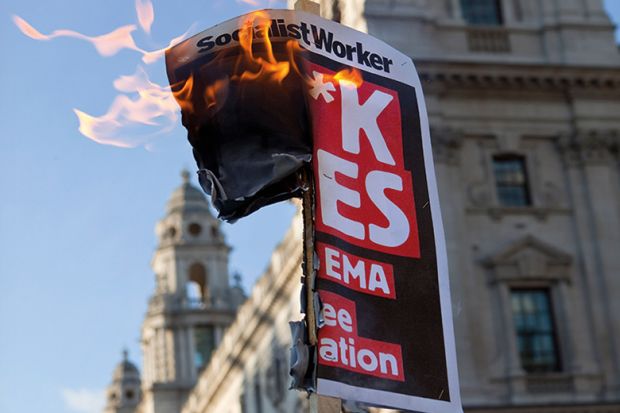“The delusion that there are thousands of young people about who are capable of benefiting from university training, but have somehow failed to find their way there, is a necessary component of the expansionist case. More will mean worse.”
So said Kingsley Amis in 1960, at a time when just 5 per cent of the UK population went to university. On one level, Amis was right: there weren’t thousands of capable young people missing out – there were hundreds of thousands. In 1960, about 22,500 full-time students graduated; the number enrolling in 2015-16 was 542,000.
Few would argue for a return to such tightly restricted student numbers; but today’s participation rate of close to 50 per cent is not without critics, particularly amid unease about value for money.
The fact is that the source of this unease – levels of student debt in a high-fee era – has been critical to ensuring that Amis’ prediction has not come to pass. More would most certainly have meant worse had successive governments not found ways to maintain the unit of resource as student numbers grew at such an extraordinary rate.
The worry as debate intensifies over the future funding of higher education in the UK is whether that long-standing commitment is still an accepted priority.
Free education is great in principle, but it’s less clear how it could mean anything other than fewer students or lower quality in practice.
Speaking in a Times Higher Education debate streamed on our website, Lord Adonis, who is calling for a reduction in tuition fees, argued that student number controls would have to be reintroduced within the next year or two as part of a rejig of the current system.
Of course, the dramatic growth in student numbers is not unique to the UK but is part of a global trend.
In Australia, the government has also leaned on the fiscal crutch of income-contingent loans to make this expansion possible.
Speaking in London last week, the man credited with devising this funding model insisted that it was still the most progressive approach for developed countries to operate.
One only has to look at the “horrendous” repayment burdens in the US to see how much worse the alternatives can be, argued Bruce Chapman, professor of economics at the Australian National University.
Equally strong warnings are sounded about the erosion of funding, with an inevitable impact on quality, among the US public universities.
Speaking at the European Association for International Education in Seville last week, Stephen Dunnett, vice-provost of the University at Buffalo, struck a particularly gloomy note: “We’re going to see huge disinvestment in US public education over the next five years,” he said. “It’s not about Trump, it’s that we just don’t have the money…We can’t sustain the never-ending war in the Middle East, the huge military budget, all the healthcare issues, and also fund higher education – and [universities] don’t have a lot of advocates.”
Others at the EAIE conference highlighted the scale of the challenge globally.
The growing chasm between supply and demand for higher education in developing countries was described as “frightening” by Hilligje van’t Land, secretary general of the International Association of Universities.
If the answer to these capacity issues is more involvement of for-profit providers and funding from industry with a direct interest in the type of education (or, indeed, research) that takes place, that could very quickly change the nature of higher education.
“The privatisation of public higher education is a real challenge,” she said. “Education is one thing, quality higher education is something else; and that should never be forgotten.”
Things have moved on since Amis’ time. But the issue of quality versus quantity, and the search for a system that does not require a trade-off between the two, continues.
Those systems built on a foundation of income-contingent loans, underwritten by the state, are not perfect, and there is self-evidently political capital in tugging at loose strings hanging from gilded gowns.
But maintaining the widest possible access for those with the talent and motivation to benefit from higher education is of paramount importance.
You shouldn’t have to be Lucky Jim to get into university in the developed world in 2017.
Register to continue
Why register?
- Registration is free and only takes a moment
- Once registered, you can read 3 articles a month
- Sign up for our newsletter
Subscribe
Or subscribe for unlimited access to:
- Unlimited access to news, views, insights & reviews
- Digital editions
- Digital access to THE’s university and college rankings analysis
Already registered or a current subscriber?
